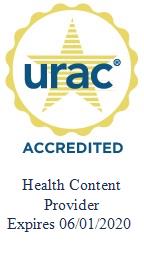Health Library
Secondary parkinsonism
Parkinsonism - secondary; Atypical Parkinson disease
Secondary parkinsonism is when symptoms similar to Parkinson disease are caused by certain medicines, a different nervous system disorder, or another illness.
Parkinsonism refers to any condition that involves the types of movement problems seen in Parkinson disease. These problems include tremors, slow movement, and stiffness of the arms and legs.
Images

I Would Like to Learn About:
Causes
Secondary parkinsonism may be caused by health problems, including:
- Brain injury
- Diffuse Lewy body disease (a type of dementia)
- Encephalitis
- HIV/AIDS
- Meningitis
- Multiple system atrophy
- Progressive supranuclear palsy
- Stroke
- Wilson disease
Other causes of secondary parkinsonism include:
- Brain damage caused by anesthesia drugs (such as during surgery)
- Carbon monoxide poisoning
- Certain medicines used to treat mental disorders or nausea (metoclopramide and prochlorperazine)
- Mercury poisoning and other chemical poisonings
- Overdoses of narcotics
- MPTP (a contaminant in some street drugs)
There have been rare cases of secondary parkinsonism among IV drug users who injected a substance called MPTP, which can be produced when making a form of heroin.
Symptoms
Common symptoms include:
- Decrease in facial expressions
- Difficulty starting and controlling movement
- Loss or weakness of movement (paralysis)
- Soft voice
- Stiffness of the trunk, arms, or legs
- Tremor
Confusion and memory loss may be likely in secondary parkinsonism. This is because many diseases that cause secondary parkinsonism also lead to dementia.
Exams and Tests
The health care provider will perform a physical exam and ask questions about the person's medical history and symptoms. Be aware that the symptoms may be hard to assess, particularly in older adults.
Examination may show:
- Difficulty starting or stopping voluntary movements
- Tense muscles
- Problems with posture
- Slow, shuffling walk
- Tremors (shaking)
Reflexes are usually normal.
Tests may be ordered to confirm or rule out other problems that can cause similar symptoms.
Treatment
If the condition is caused by a medicine, the provider may recommend changing or stopping the medicine.
Treating underlying conditions, such as stroke or infections, can reduce symptoms or prevent the condition from getting worse.
If symptoms make it hard to do everyday activities, the provider may recommend medicine. Medicines used to treat this condition can cause severe side effects. It is important to see the provider for check-ups. Secondary parkinsonism tends to be less responsive to medical therapy than Parkinson disease.
Outlook (Prognosis)
Unlike Parkinson disease, some types of secondary parkinsonism may stabilize or even improve if the underlying cause is treated. Some brain problems, such as Lewy body disease, are not reversible.
Possible Complications
This condition may lead to these problems:
- Difficulty doing daily activities
- Difficulty swallowing (eating)
- Disability (varying degrees)
- Injuries from falls
- Side effects of medicines used to treat the condition
Side effects from loss of strength (debilitation):
- Breathing food, fluid, or mucus into the lungs (aspiration)
- Blood clot in a deep vein (deep vein thrombosis)
- Malnutrition
When to Contact a Medical Professional
Contact the provider if:
- Symptoms of secondary parkinsonism develop, come back, or get worse.
- New symptoms appear, including confusion and movements that cannot be controlled.
- You are unable to care for the person at home after treatment starts.
Prevention
Treating conditions that cause secondary parkinsonism may decrease the risk.
People taking medicines that can cause secondary parkinsonism should be carefully monitored by the provider to prevent the condition from developing.
Related Information
Parkinson diseaseStroke
Encephalitis
Meningitis
Toxins
Hemoglobin derivatives
Aspiration
Deep vein thrombosis
References
Fox SH, Katzenschlager R, Lim SY, et al; Movement Disorder Society Evidence-Based Medicine Committee. International Parkinson and Movement Disorder Society evidence-based medicine review: update on treatments for the motor symptoms of Parkinson's disease. Mov Disord. 2018;33(8):1248-1266. PMID: 29570866 pubmed.ncbi.nlm.nih.gov/29570866/.
Jankovic J. Parkinson disease and other movement disorders. In: Jankovic J, Mazziotta JC, Pomeroy SL, Newman NJ, eds. Bradley and Daroff's Neurology in Clinical Practice. 8th ed. Philadelphia, PA: Elsevier; 2022:chap 96.
Okun MS, Lang AE. Parkinsonism. In: Goldman L, Schafer AI, eds. Goldman-Cecil Medicine. 26th ed. Philadelphia, PA: Elsevier; 2020:chap 381.
Tate J. Parkinson disease. In: Kellerman RD, Rakel DP, eds. Conn's Current Therapy 2020. Philadelphia, PA: Elsevier; 2020:721-725.
BACK TO TOPReview Date: 1/23/2022
Reviewed By: Joseph V. Campellone, MD, Department of Neurology, Cooper Medical School at Rowan University, Camden, NJ. Review provided by VeriMed Healthcare Network. Also reviewed by David Zieve, MD, MHA, Medical Director, Brenda Conaway, Editorial Director, and the A.D.A.M. Editorial team.
 | A.D.A.M., Inc. is accredited by URAC, for Health Content Provider (www.urac.org). URAC's accreditation program is an independent audit to verify that A.D.A.M. follows rigorous standards of quality and accountability. A.D.A.M. is among the first to achieve this important distinction for online health information and services. Learn more about A.D.A.M.'s editorial policy, editorial process and privacy policy. A.D.A.M. is also a founding member of Hi-Ethics. This site complies with the HONcode standard for trustworthy health information: verify here. |
The information provided herein should not be used during any medical emergency or for the diagnosis or treatment of any medical condition. A licensed medical professional should be consulted for diagnosis and treatment of any and all medical conditions. Links to other sites are provided for information only -- they do not constitute endorsements of those other sites. © 1997- 2022 A.D.A.M., a business unit of Ebix, Inc. Any duplication or distribution of the information contained herein is strictly prohibited.
